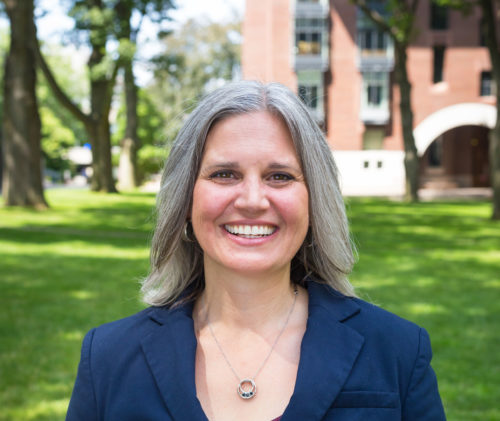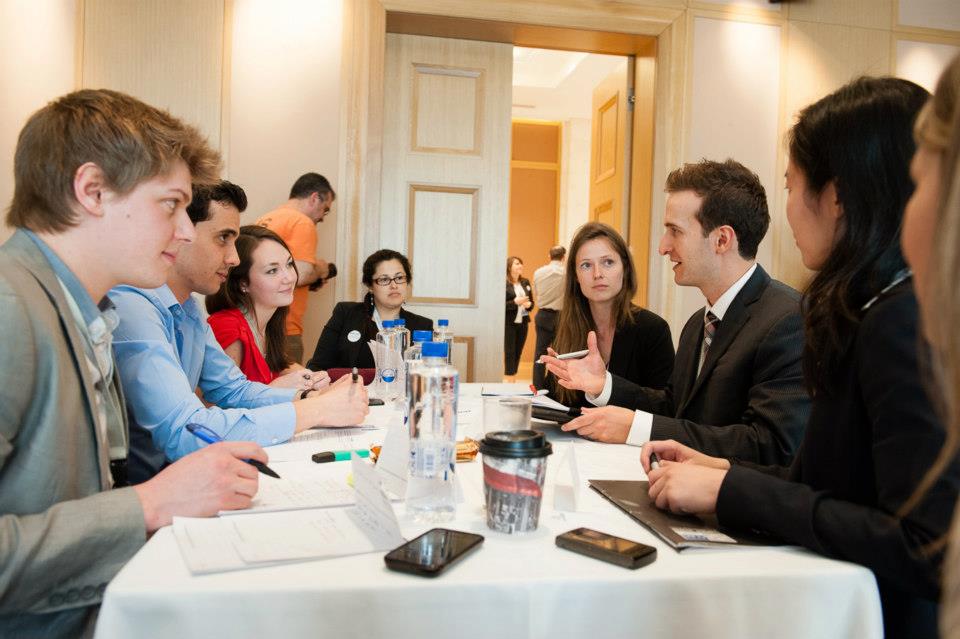
Preparation. Practice. Persistence. Those qualities make for a good firefighter, and as Nantucket Firefighter Nate Barber learned from working with HNMCP students, they also make for a good negotiator.
As a member of Nantucket’s Local 2509 of the International Association of Firefighters and a former undergraduate negotiation student at Boston University, Nate knew relations between the Town of Nantucket’s management and his union could be better. Since the firefighters’ contracts only lasted two or three years and the negotiation process itself often took that long, the union and the management sat down for contract negotiations every year. And every year, the negotiations spilled over into the next year or, if it was the final year of the contract, went to arbitration. This impacted everyone: arbitration provoked more fighting, poorer relations, and less of what everyone wanted. They hadn’t had a mutual agreement for six years. As one of the interested parties, though, Nate knew he was not the person to fix a broken bargaining system.

After taking a Harvard Negotiation Institute course with HNMCP Director Bob Bordone, Nate quickly identified HNMCP as a potential source of assistance. The first step was to train union and management employees in basic negotiation skills. Harvard Negotiators students Elaine Lin ’10 and Adam Glenn ’10 provided such training. Once trained, though, the parties realized the negotiation process itself, not the parties’ skills, was creating roadblocks.
During the 2010 Fall Semester, Clinic students Ken Gantz, James Goldschmidt ’10, and Emilie Aguirre ’12 took on that challenge. They conducted focus groups and interviews with multiple stakeholders and brainstormed ways to restructure a more effective negotiation process. The students also researched models of collective bargaining from other municipalities. In the end the students identified specific challenges to the current negotiation system and recommended procedural reforms designed to make a collaborative collective bargaining process more likely. They presented their findings to the board of selectmen, the town manager, the assistant town manager, the town human resources director, and union representatives.
Too often, reports and recommendations are stashed in a drawer, never to be employed. But in Nantucket, the firefighter’s union and the town management found the recommendations to be so helpful, they changed their contract negotiation approach.

Instead of using the town manager as the primary negotiator for the town, the students recommended the selectmen appoint a negotiator with greater authority to settle. That way, if both sides discussed an option at the table, the management representatives could modify it or agree to it outright, without having to go back to the selectmen for approval.
“That was one of the best negotiation suggestions the students had,” Nate relayed. “We’ve had one round of negotiations since the project, and we settled at the table.
While settling at the table is certainly beneficial, HNMCP students know that a sustainable bargaining system also ensures both sides’ interests are met. Without addressing the primary issues head on and discussing them in intelligent ways, the students knew their clients could easily revert to entrenched behaviors. Thus, they helped both sides focus on what mattered most, instead of getting bogged down in smaller, less important issues.
Nate praised the students for taking a genuine interest in each side. This helped create a more constructive negotiation environment. “Before, no one had talked about negotiations in terms of how the process had gone. People just bickered about what they’d gotten or not gotten. This time, the town and the union worked hard on improving negotiations before we negotiated, and that was apparent. We got a fair contract that both sides are happy with.”
The agreement included a provision to double the number of firefighters during busy summer months, a primary concern for the firefighters. In turn, the town representatives received some cost savings that made the increase in personnel easier for the town to approve.
The biggest challenge for the firefighter’s union was describing the new process to its members. The members were so used to the former system of “fighting it out” in arbitration that it took awhile for them to see the benefits of a collaborative process. But once Nate explained that the new process allowed them to vent frustrations at the table and add value to their contract, not one firefighter voted against it.
The firefighters and the town are planning to use the same process for future negotiations, as both sides felt it created a healthier, more trusting relationship between the parties. Having a successful model has encouraged the town and other unions to rethink their bargaining structures, too. Since the firefighters’ negotiation, no other town employees’ unions have gone to arbitration. The police department is considering using a collaborative bargaining process similar to the firefighters, especially since the same town officials are involved in negotiating the police contract.
As for the firefighters, they are anticipating a well-staffed summer season. “We have a lot to build on,” Nate conceded. “It will get better with each round. We like where we are, and where we are headed. Everything’s looking up after HNMCP worked with us.”






